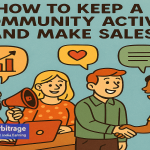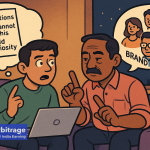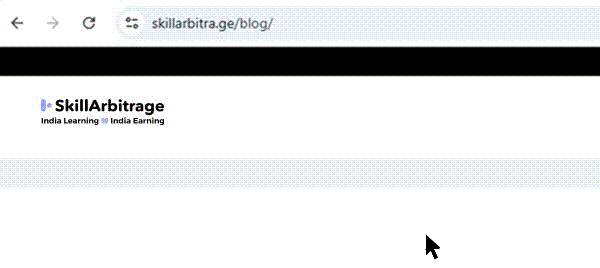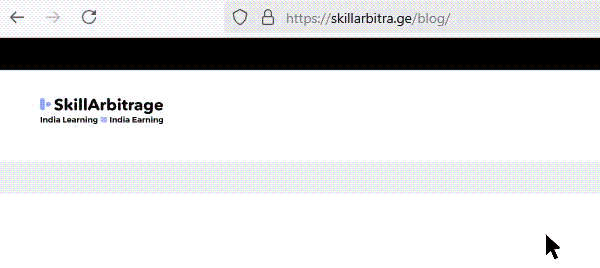This blog will show you how to present a high-ticket offer without making the other person feel like you are asking for too much.
Table of Contents
Introduction
A friend of mine who is a video editor recently launched a high-ticket video editing package for social media influencers. He priced it at ₹50,000 per month.
He had sent me the details, and trust me, the offer was solid, and the outcome was extremely clear. He had also attached real testimonials, but when he sent it to his email list, nothing happened. No replies. No questions. No bookings. Just dead silence.
He had spent weeks creating this package in a way that it was the perfect package for influencers, but getting no response made him lose sleep. It was better than all his competitors, so he was confused about what went wrong.
So, one day while talking about it to me, he said, “Bro, I don’t get it. I have sold ₹2,000 reels and montages easily before. But the moment I priced something at ₹50k, people just disappeared.”
I was also confused about what went wrong, so I simply asked him, “How did you present the offer?” His answer clarified everything in the blink of an eye.
He said, “I just told them it is a premium monthly package, attached details of what they will get, and then mentioned that it costs ₹50,000. That’s it.”
That was the moment when I identified where the problem was. I spent 3-4 days helping him with the solution, and in the end, he landed not 1, not 2, but 5 clients in under a week.
That is when it hit me that if my friend is facing this problem, then others must face it too. So, I decided to write this blog in order to help others understand the right way of pitching high-ticket offers.
See, most people think pricing high-ticket offers is about picking the right number, but it’s not. The real problem is not the price but the real problem is how you show that price. The simple trick is to build value before showing the price, or else people just get scared.
Let me explain this concept to you with an example –
Imagine you walk into a shop. The shopkeeper shows you a plain water bottle and says, “This is ₹5,000.” You’ll leave. But if he shows you a bottle used by astronauts that keeps your drink cold for 3 days, and made with tech used in space… now that ₹5,000 feels like a deal.
That’s exactly what happens with high-ticket offers. If people do not feel the value, they will never pay the price. And no, value does not mean features. Instead, it means outcome, transformation, and proof.
So if you are selling a premium product or service and people keep telling you, “It’s too expensive,” then this blog is going to be a great help for you.
Because I am going to show you a step-by-step system that helps you present your high-ticket offer in a way that feels like a no-brainer. From now on, no need for discounts or lowering your price. You only need to position it right so that the buyer actually wants to pay.
What buyers need to see before they say yes to a high-ticket offer?
Before I show you the exact step-by-step system, it’s important for you to understand what buyers really need to see if you want them to accept your high-ticket offer. Because if you won’t even know what the buyer wants to see, how will you show them that?
Now, pause for a second and think about why someone would say yes to a high-ticket offer. See, for a Rs 200 product, people might not think much, but for something that’s Rs 50,000, they will definitely do their due diligence.
See, it is not because your product has 20 features. It is not because your offer has a cool name. And it is definitely not because you said, “limited stocks left.” People buy when they feel like saying yes is the smartest, safest, and most obvious thing to do.
But how can you evoke that feeling, and where does that feeling come from? It comes from clarity, confidence, and proof. Let me show you what I mean by that in simple words:
1. They need to see how it is better than a cheaper option
See, if you are selling a high-ticket offer, then you cannot offer something that a low-ticket offer will also have, or else nobody with a sane mind will pay a higher price.
For example: If your pitch sounds like, “You’ll get 3 layout options, 10 design sketches, and 2 revisions,” then they will scroll and ignore your offer. But if it sounds like –
“You’ll get a complete redesign tailored to your lifestyle, with every space planned using materials we’ve used in celebrity homes and luxury hotels.” Then they will be more interested to hear. Why?
Because now, those same deliverables sound premium, and that’s what they will be ready to pay for.
2. They need to see a clear outcome that they could not get alone
If someone is paying a premium, they are not paying for your time, as you are not some celebrities, so you need to make them feel that they are paying for a result they could not get without you.
For example: If you say, “This includes 5 design consultations,” then they will zone out as it does not mean anything and does not tell what result they will get. But if you say something like –
“We’ll transform your home into a luxury space that reflects your personality and adds ₹10L+ to its market value without you lifting a finger.” Now they will be interested.
Why? Because suddenly, it’s not about the consultations, but it is about the outcome that they cannot get without you. That is what will make it worth the price, and not the work you will do, but what your work will do for them.
3. They need to see proof that it worked for someone like them
Nobody wants to be your experiment. If they are going to spend big money, they need to feel safe, and that means seeing that it’s already worked for others in the same situation.
For example: A generic testimonial like “Great experience, highly recommend” will not convince them.
But something like, “Our old 2BHK looked dull and cluttered. After working with them, it feels like a high-end villa, and our guests keep asking who designed it” will get their attention. Why?
Because now they see someone just like them with the same struggle and same doubts getting real results. That is when trust kicks in.
4. They need to feel it is premium and not just expensive
High-ticket does not just mean high price, but it also means high perceived value. And if your pitch feels average, then even ₹500 will feel like too much.
For example: If your website looks outdated or you explain your design process like a beginner, people will think, “Why is this so expensive?”
But if your portfolio looks world-class, your walkthroughs are confident, and your brand visuals are polished, then ₹5L won’t feel like a stretch. It’ll feel fair. Maybe even cheap. Because when your presentation screams premium, the price feels justified.
5. They need urgency but with honesty.
High-ticket buyers are not dumb. If you use fake timers or say limited quantity when they can clearly see that it is unlimited, then they’ll stop trusting you. You do not need fake scarcity. You just need urgency that is honest and actually makes sense.
For example: If you say, “Only 2 slots left,” but you clearly take on projects all month, they’ll roll their eyes because they know you are tricking them.
But if you say, “We only work with 3 homes per month to maintain full creative attention, and bookings close by Friday,” then they will trust you more because it’s not something fake.
This kind of urgency feels real as it is tied to how you deliver and not how fast they pay. And that’s what builds trust while also pushing urgency.
6. They need confidence that their money will come back
When somebody buys a high-ticket product, they want to feel like they are investing and that the money will come back bigger. For example: If your offer sounds like, “Pay ₹5L for interior design, furniture layout, and consultation calls,” they will hesitate.
But if you say, “Pay ₹5L and I’ll turn your 3BHK into a luxury space that looks straight out of a magazine and has helped 12 clients increase their resale value by over ₹15L,” then they will be interested. Why?
Because now it does not feel like a cost. Instead, it feels like a smart bet. And that is what makes people say yes to high-ticket offers.
These are the things that buyers actually look for before they say yes to a high-ticket offer. Not your pricing table. Not your feature list. And not your product’s fancy name. They care about the results being a win for them, that’s it.
And now that you know exactly what they need to see, it’s time you learn a step-by-step method on how to present your offer in a way so that all of these become constituents of your pitch.
A step-by-step method to present a high-ticket offer without scaring people away
Now, let me make one thing clear before we start. This is not about using fancy words or psychological tricks to manipulate people. That might work once, but it won’t help you build a long-term brand or close premium clients again and again.
What you are going to learn is a method that helps you position your high-ticket offer in a way that feels obvious, valuable, and the most logical choice to the buyer. No begging. No justifying. No discounts.
Just a system that builds the right perception from the start so that when you say your price, it doesn’t feel scary, instead, it feels fair. Sometimes, even cheap.
And once you get this system in place, you will notice that people start saying, “How do I get started?” instead of “Can I get a discount?” If you have understood till here, it’s time I show you exactly how to do that…
Step 1: Warm them up
You cannot just send a high-ticket offer (even though it is extremely good) to a cold lead and expect them to buy. That is just not possible because it will feel desperate. With low-ticket offers, it could work, but with high-ticket, it is an entirely different game.
When someone sees a Rs 50k offer from a stranger, their first reaction is not curiosity to know the details, but it’s “Why should I trust you?” That is why cold pitching a high-ticket offer kills trust, which is one of the most important constituents to sell such products/services.
So the first step to presenting a high-ticket offer starts before even the presentation. You need to build the roots first before you expect a strong tree. In the same way, you need to warm the leads before you can present strongly. Here is the right way to do that:
1. Start sharing content
Start by choosing 3 to 5 specific pain points that your leads might be facing right now, then write posts, create videos, or share stories, helping them solve those exact problems.
Send this content to their email, social media, and even your own handles. If you help the leads before they even ask for anything, they will automatically see you as a guide and not a seller.
This way, your high-ticket price will feel justified instead of just looking like a cash grab. For example:
Suppose you are an interior designer and want to turn your leads warm, so you can simply share tips on how to make a small room feel bigger or how lighting impacts mood.
2. Show proof
After sharing helpful content, it is not the time to brag but the time to show that you have already done this for other people, and it worked. This is what will make your offer look real in their eyes.
You can share screenshots, before-and-after photos, quick case studies, or simple stories that clearly show transformation. Make sure it feels real and relatable.
See, nobody wants to be your first success story. They want to feel safe before they spend, especially if it is a high-ticket product/service. And that safety comes from seeing someone just like them winning because of your work. For example:
Suppose you are an interior designer and want to build trust, then you could share testimonials where your customers are saying something relatable like –
“This 2BHK used to feel dark and cluttered. After our redesign, it looks like a premium space, and the family says guests now ask who did the interiors.”
3. Engage
Do not just post content and disappear. Start real conversations with your audience by replying to DMs, asking questions, running polls, or hosting quick Q&As. This will make them feel heard, and that’s how you will go from a stranger to a trusted expert.
See, trust will not just come from good content, but it will come from interaction. When people feel like you actually listen, they start seeing you as their known person and not just another seller. For example:
“What’s your biggest design struggle at home right now? DM me, and I’ll send you one quick fix.”
4. End with a call to action
Your goal is not just to share value but to guide them toward the next step. So don’t end your post with a full stop. End it with a direction. Tell them what to do next, whether it’s commenting, messaging, booking a call, or checking something out.
Because if you do not guide them, they will just scroll and forget you. A clear CTA is how you turn attention into action. For example, you can end your posts with – “Want a similar transformation for your home? Book a free walkthrough consult here.”
Now, by the time you pitch your offer, these won’t be cold leads but they will have become warm leads for you. They would already trust you and like you, and when you pitch, they would want to know more.
Because now they already know you are an expert in what you do, and most probably, with your content, you have already provided value to them, so when you pitch a high-ticket offer, it will convey that it will be super valuable.
That is exactly when your offer will actually land like a natural next step instead of a pitch. Now that you have turned them warm, you will have to start making them feel their problem because until they don’t feel the problem, they won’t take your solution.
Step 2: Show the problem
Until you don’t show them the problem they are facing, they won’t feel it. You need to remind them again and again, as well as make them feel like it’s a very big problem they should be urgently solving.
Only once they understand the severity of the problem will they be ready to pay a higher price for the solution; otherwise, they will just feel they do not need the solution yet. Let me show you how you can show them their problem the right way:
1. Pick the core problem your offer solves
You cannot start by listing everything your offer includes when it is about a high-ticket offer. That doesn’t hook anyone; instead, it repulses.
Start by identifying the one core problem your ideal lead might be struggling with right now, which is the same thing that’s bothering them daily, even if they’re not saying it out loud.
Once you find that one burning pain, you will make it the focus of your message because that’s no less than gold.
2. Describe that problem in their own words
Once you figure out the core problem that your offer will solve, it’s time to write it like your leads would actually say it, not how you’d explain it as an expert. Let me explain this to you with an example.
This is wrong – “Your spatial flow is poor and your lighting lacks warmth.”
While this is right – “Your house feels cramped, and no matter how many lamps you add, it still looks dull.”
The second statement is in their own words, and that is what will build trust and make people see it as “This person gets me” because it is in their own words. Here’s how you can do it:
Start by going back to your old client chats, DMs, or call notes. Find the exact phrases they used when they were explaining their problem. Take those same lines and use them in your content. And that’s it. The simplest way to do it. For example:
“Your house feels tight, the lighting makes everything look dull, and even after buying decor, something still feels off.”
3. Tell a short story or example that they can relate to
Now that you’ve described the problem, take it one step deeper and share a real story where you talk about someone who was stuck in the exact same situation as them and how it affected their life. Keep it short, simple, and relatable.
This works beautifully because stories never feel like sales. They feel like real life. When people see themselves in that story through the lens of someone else, they drop their guard and start trusting you. For example:
“One of our clients had a 2BHK that always looked dark, even during the day. She used to avoid inviting guests over. After a small layout tweak and better lighting, it felt like a completely new space. Now, she hosts game nights every week.”
4. Hint that there is a better way
You’ve shown the problem. Now give them a reason to hope for solutions, but don’t reveal your offer yet. Just drop a soft hint that their problem could be fixed. This is very important because it will build curiosity. For example:
“Most people just keep buying new decor, hoping it’ll fix the vibe. But the truth is, it’s not what you buy. It’s how your space is planned. And that’s where we come in.”
That will be enough to spark interest without any pressure or pitch, as it is just a gentle nudge that you might have the answer they have been looking for.
And this is how you have to pitch the need for the product instead of just the product. Till now, you have shown them that you understand their problem better than anyone else, and you also have a solution.
Now, when you finally reveal the offer in the next step, they will give you their full attention because you’ve earned their attention and made them feel valued.
Step 3: Pitch your offer in the correct way
Now you have turned your leads warm and made them feel their problem. It’s the perfect time to pitch. But pitching in the right way is very important.
If your offer sounds like, “You’ll get X, Y, and Z,” then they’ll lose interest. Because all they hear is a list of stuff. And nobody pays high-ticket prices for stuff. Then, when do they pay?
They pay when they can see a clear journey from where they are to where they want to be, and they believe you are the one who can get them there. So, instead of pitching deliverables, show them a transformation path. Let me show you how.
1. The beginning of the pitch
Start your pitch by describing the exact situation your leads are stuck in. Use simple, emotional words to go deep into the emotional side of the problem they are facing, in the same words as they would actually say or feel.
That is because when you show them their current struggle in a way that feels personal, they instantly feel understood. And once they feel that, they’ll want to know what comes next.
You can share this as part of your post, landing page, video, or email, wherever you are going to make the pitch. Let me show you how it looks, for example:
“Right now, your house feels cluttered. You’ve moved things around and bought new decor, but it still doesn’t feel like home. Something’s always off.”
That’s how you start the pitch by showing them that you understand where they are right now. And now they will be more inclined to hear where you can take them.
2. The dream side of the pitch
After describing the problem, describe the outcome your leads are secretly dreaming about. Not in a dry, technical way, but in a way that makes them imagine and feel it emotionally.
This part is important because people don’t buy deliverables; instead, they buy results, upgrades, and a better version of their lives. So your job here is to help them visualise that dream outcome so clearly that they start wanting it before you even talk about the offer.
You can include this in your pitch right after you have described their current struggle. Here is an example of how it could look:
“Imagine walking into a space that feels calm, fresh, and truly yours. Everything from lighting to layout makes sense. And your friends keep asking who designed it.”
This is how you show them what’s possible. And once they can see it, they’ll naturally want to follow you there. That is when you show them the big game.
3. The final offer
Once you show them the dream, now is the time to break down in front of them on how you’ll take them there. This does not mean you should just show features. This means you need to break your offer into 3 to 5 clear steps that feel like a guided process for the lead.
This matters because when people see a clear step-by-step path, they trust it more as it feels structured and doable. You can write this in your pitch, landing page, or even while talking to them directly, basically wherever you plan to pitch. Here’s how it can look:
- Week 1: We fix your layout.
- Week 2: We pick the lighting, colors, and materials.
- Week 3: We bring it all together and polish every detail.
Now they will not just see what they are buying, but they will also see how it works, and that is what will make it real. But till now, you have not shown them the price. As it is a high-ticket offer, the best way to show the price is by anchoring the value first. Let me explain.
Step 4: Anchor the value
If leads are saying that your high-ticket offer feels “too expensive” to them, then it is not because they think it is cheap or not valuable enough, but it is because they don’t yet feel what the problem is costing them.
See, suppose your conversion rate now is 3%. Somebody came to you and said, “I’ll double it to 6% in a month. If I do it, you give me 1% of the revenue. If I don’t, you owe me nothing.”
Won’t you pay 1% to earn an extra 3%? Because if you don’t, then it will cost you 2% of your conversion rate. That is your job. To explain your leads, the real cost of not taking action and buying what you provide. But how can you anchor the value?
1. The cost
Start by asking your leads what the problem is costing them. Not specifically in monetary terms, but even emotionally. Make them think about the time, money, or energy that they have already lost by staying stuck. For example:
“How much is this costing you every month? Mentally, financially, or emotionally.”
2. Mental calculation
Then, convince your leads to do a quick mental calculation in their mind related to what you could save them in respect to what’s costing them.
You don’t have to give them the exact numbers. Instead, just guide their thinking toward what they are already losing month after month.
For example, you could say: “This problem is costing you ₹ 1.5 L every month, that’s ₹ 90 L gone in 6 months. My offer doesn’t cost that much, and it will help you save that money.”
This will help them see your price as a smart investment instead of an added expense.
Once this is done, the value has already been anchored in front of them. Now, as long as your price is less than their loss, it will feel like a win for your leads.
This way, the leads would not compare your price to Rs 0. Instead, they will compare it to the cost of staying stuck. That is when even spending ₹50K won’t feel expensive, but it will feel smart. Now, let’s make the final move, which is to reveal the price.
Step 5: Present the price
This is the point where most people mess it up. They say the price and instantly panic because they themselves feel it is high. So they start explaining, justifying, listing more features, or nervously rambling to fill the silence.
And guess what? That’s the moment the lead moves away. You don’t need to do any of that. You just need to say the price like it is normal. No need for build-up, drama, or hesitation. Go with a simple, confident sentence like, it’s a normal price for the value you provide.
But you can’t do that if you have never practiced saying it. So, before the call or the pitch, practice speaking your price out loud a few times. Literally say it again and again. Say – “It’s ₹50,000 for the full project. Payment plans are available if needed.”
Keep saying it until it starts coming out smoothly because if you sound unsure, they’ll start second-guessing, but if you sound calm, they’ll take it as normal.
And shut up once you’ve said the price. No need to say anything. Maintain calm with patience. Don’t try to fill the silence. Don’t jump in with, “But you’ll also get…” or “I know it’s a bit much but…”
It will feel uncomfortable the first few times, but that pause is powerful. That’s when the lead is actually thinking about the offer. If you interrupt it, you will ruin the moment, but if you hold it, then you will hold the frame.
See, you have already shown the value. You have shown the journey. Now, let the price land, and let them process it. Let them speak first. That’s how you stay in control. And that’s how you make the sale.
Conclusion
Most people think presenting a high-ticket offer is just about saying the price confidently. But I hope now you understand that without building the right perception, even the best offer can feel expensive and scare buyers away.
I just gave you the exact, step-by-step method to present your high-ticket offer in a way that actually makes people feel excited to pay and not pressured. So, from now on, no more nervous pricing, no more ghosting, and no more second-guessing your worth.
Now, it’s your turn to take everything you’ve learned here, apply it to your next high-ticket pitch, and watch how your offer stops getting ignored and starts landing like a no-brainer.
Frequently asked questions
- What if my high-ticket offer is genuinely expensive? How do I justify it?
You don’t justify. You show the value. You explain the transformation, the result, and the ROI in a way that makes the price feel fair. People don’t buy expensive things because they’re cheap. They buy them because it feels worth it.
- Should I ever offer a discount if they hesitate?
No. Because the moment you drop the price, they’ll start doubting the value. Instead, ask, “What’s making you hesitate?” Then solve that problem. Most of the time, it’s not even about money. Instead, it’s about clarity or confidence. Fix that, not your price.
- What if they say, “I can get this done cheaper elsewhere”?
Then let them. Because cheaper is only cheaper if the result is the same. You’re not competing on price. You’re competing on outcome. You can just say, “That’s totally fair. Just make sure you’re comparing the result, not just the offer.”
- Should I offer EMI or payment plans for high-ticket offers?
Yes, if it makes the buying decision easier without devaluing the offer. Just don’t lead with it. First, show why it’s worth the full price. Then offer flexibility, not discounts. That way, people feel it’s a premium offer made accessible and not a cheap offer in disguise.
- What if my service genuinely doesn’t have a big transformation, just quality work?
Then make the quality your transformation. If others in your industry are sloppy, slow, or inconsistent, then your consistency itself is a big win. For example: “No more chasing vendors. No more reshooting videos. You’ll get consistent, high-end output without micro-managing anything.” People pay high-ticket prices not just for what they get but also for what they avoid.







 Allow notifications
Allow notifications
